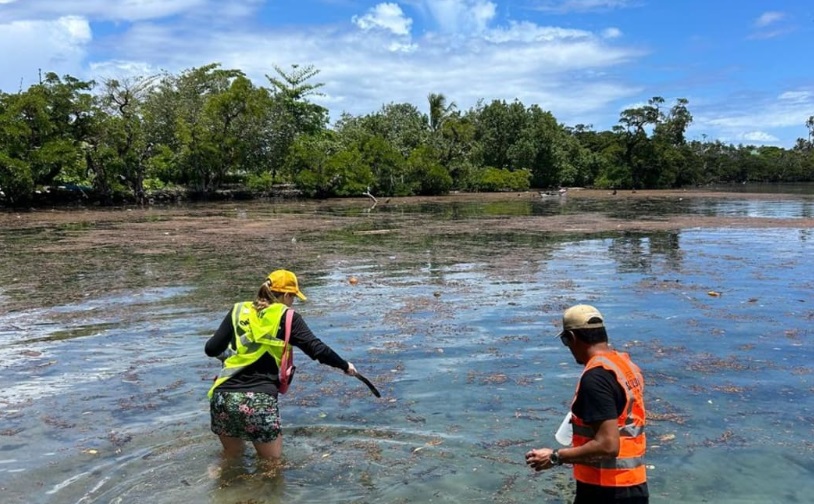
The wreck of the New Zealand Navy ship is sitting in shallow water close to a reef off the South coast of Samoa's most populated island, Upolo.
It hit the reef, then sank on October 7, carrying 950 tonnes - the equivalent of 950,000 litres - of fuel. Already, more than 200,000 litres of diesel and oil is thought to have leaked out into the ocean, which many locals rely on heavily for their livelihoods.
But the situation could worsen badly, and soon, said Nicholas Ling, a University of Waikato associate professor in ecology.
Where the ship has sunk is especially dangerous, and efforts to safely recover the large volume of fuel in its tanks are likely to become much more hazardous as the Pacific's cyclone season develops, he said.
Cyclone season in the South Pacific runs from November until April, with about nine tropical cyclones on average.
A salvage plan to recover the ship and the fuel on the Manawanui has not yet been approved, and salvage equipment is not expected to arrive in Apia from Whangārei for three weeks, Samoa's Marine Pollution Advisory Committee (MPAC) said - including a barge needed to remove the ship's fuel tanks.
"Significant damage to the reef," had already occurred because of the wreck, MPAC said earlier.
The wreck is not in deep water, which makes it more likely to be knocked around by the swell, Prof Ling said.
"Any rough weather's going to make the ongoing salvage of the remaining fuel in the wreck very challenging. Even if it's not a cyclone - fairly large swells are going to make working around the wreck pretty challenging, close to the reef."
It is also lying very close to the reef.
"One of the issues with cyclones - [they] can generate some very large swells that can damage reefs in their own right. But with a shallow wreck like that it could potentially move the wreck around.
"It could start to break it up - and that could create further damage to the reef."
Even if the Manawanui was salvaged, there was no infrastructure in Samoa or anywhere nearby to deal with it, he said.













